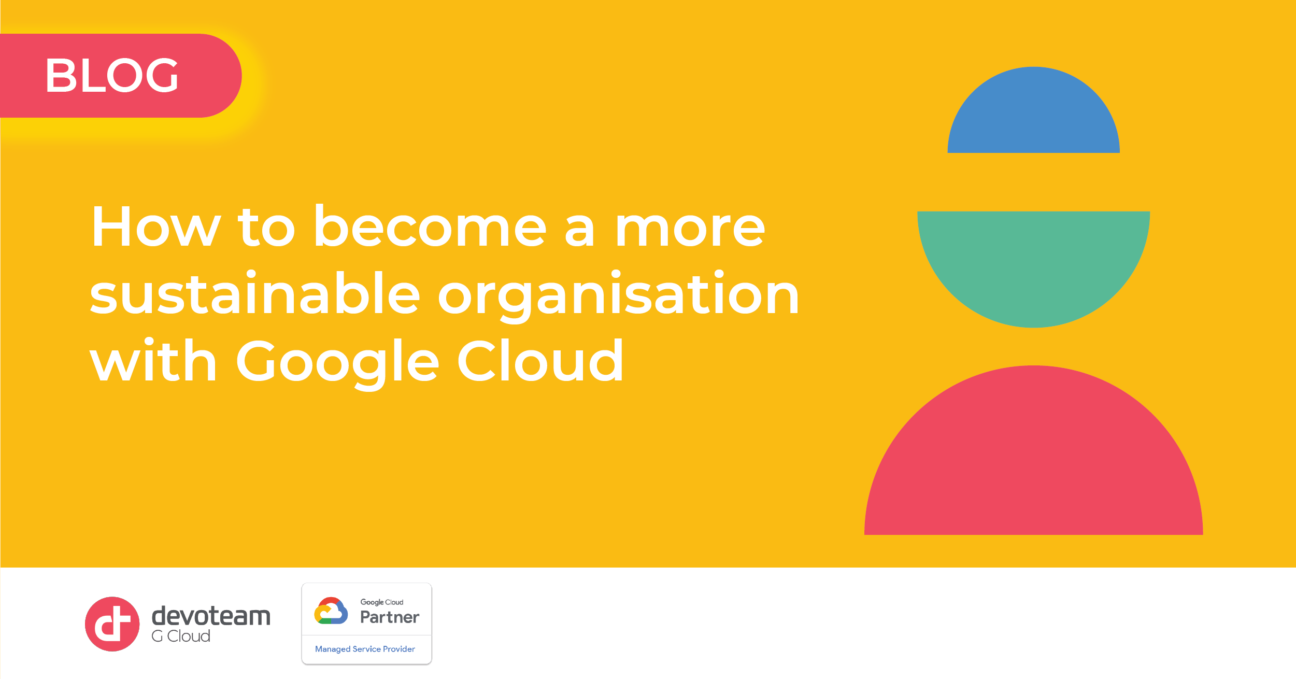Climate change and working more sustainably are both opportunity and responsibility that companies can’t ignore anymore. Sustainable business practices are more important than ever. But how do you get started on the journey towards more sustainability? Google Cloud can help you, and here’s how.

The science is clear: climate change is a certainty that cannot be ignored anymore. Regulations and public opinion are putting companies under increasing scrutiny to respond to that challenge, and top decision-makers have no choice but to play their part. It is no different for the IT sector: data centers around the world consume more than 1% of global electricity. With the number of connected devices expected to grow over the years, this statistic is likely to grow. This makes the need for sustainable IT greater than ever.
Sustainability as a competitive advantage
Companies shouldn’t be afraid to tackle the challenge of working on their own sustainability goals. According to a survey conducted by HSBC, 26% of companies are motivated to improve operational efficiency, while 24% want to do it to meet regulatory standards. If we add to that the fact that Europe plans to become the 1st climate-neutral continent by 2050, we understand that implementing sustainable IT can prove to be a competitive advantage as much as a regulatory imperative.
How do you get started, though? Making the first step is often the toughest part for a company. Thankfully, Google’s long track record with environmental issues and technological innovation might just be what your company is looking for. Over the last 20 years, they have played a leading role in that area with their Cloud solutions proving to be a critical component of their overall strategy.
Google was the first major company to become carbon neutral in 2007. It was also the first one to match their energy use with 100 percent renewable energy in 2017 – including the electricity to power Google Cloud. Today, Google Cloud is the only major public cloud provider to purchase enough renewable energy to cover their entire operations.
Going to the Cloud with Google Cloud can greatly contribute to your own organisation’s sustainability goals.
What exactly makes working with Google Cloud sustainable?
Smart and more efficient data centers
Most data centers tend to use as much energy on non-computing tasks (ventilation and cooling systems, for instance) as they do to power their servers. Google was able to reduce this “overhead” to 11%.
Using their machine learning capabilities, Google reduced the electricity required to cool their servers by 30%. Moreover, in comparison, they are able to provide 7 times the computational power with the same amount of electrical power.
So if you as an organisation use Google Cloud’s infrastructure instead of your own on-prem data center, you’re working more sustainably.
Run applications with zero net emissions
When you move your application or several applications from your on-premises data center to Google Cloud, you’ll benefit from zero operational emissions from running that application.
Less energy-intensive learning
When you run machine learning workloads, this asks for complex computations. Typically, this kind of computation consumes a lot of energy.
Using Google Cloud’s TPUs, you’ll use much more efficient and less energy-consuming TPUs. These are built for running specifically deep learning workloads at higher teraflops per watt, compared to more general purpose processors.
Decisions with business and the planet in mind
From Google Earth to BigQuery GIS, data users have access to rich datasets about the natural environment. Combined with Google Cloud compute power, Artificial Intelligence, and analytics tools, customers are more empowered than ever to make smarter decisions about the earth’s resources.
Sustainable productivity and collaboration tools
Did you know that simply by working with a more sustainable office suite, you can save energy and reduce your organisation’s carbon emissions? This is possible for organisations that start using Google Workspace.
Google Workspace customers that use products like Gmail, Calendar, Docs, Drive, and Meet have reported a decrease in IT energy use and carbon emissions of 65% to 85%.
There are tons of examples of companies in a variety of industries that were able to work more sustainably by partnering with Google Cloud.
In the media industry for example, National Geographic reduced emissions by about 17kg CO2 per year by moving their photo library to Google Cloud. As for retail, Carrefour uses Google BigQuery to analyse large data sets to help forecast demand and reduce inventory waste as a result.
Last but not least, in energy & utilities, E-ON leverages Google Cloud Data & Analytics to offer real-time energy consumption data to energy managers, helping them make decisions that reduce costs and CO2 footprint.
If you’d like to join National Geographic, Carrefour and E-ON (among others) on a sustainability journey by running your company on the only cloud provider that has achieved 100% renewable energy, feel free to reach out! Devoteam G Cloud Benelux is a proud Google Partner and we have all the required in-house expertise to make this happen for your company.
If you need help in your journey to the Cloud, our experts are there to help!
